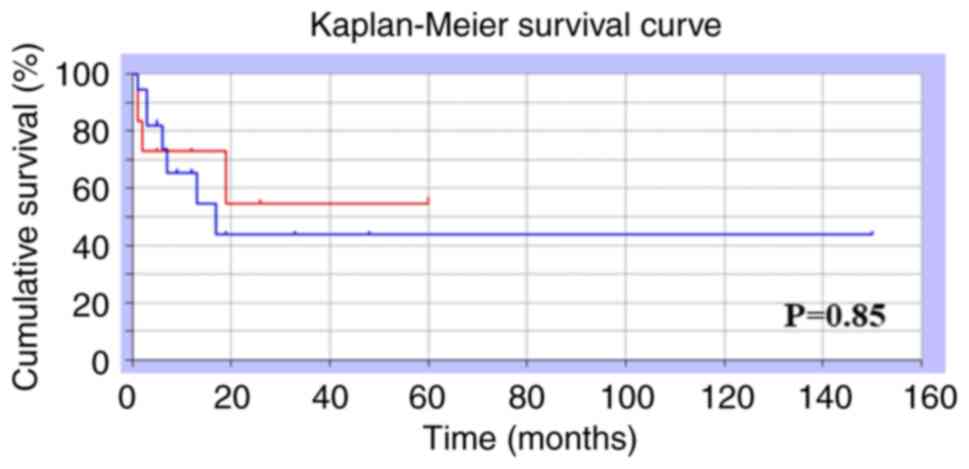Treatment algorithm for metastatic malignancies in the lower extremities
- Authors:
- Published online on: June 4, 2024 https://doi.org/10.3892/mco.2024.2749
- Article Number: 51
-
Copyright: © Hashimoto et al. This is an open access article distributed under the terms of Creative Commons Attribution License.
Metrics:
Total
Views: 0 (Spandidos Publications: | PMC Statistics:
)
Total PDF Downloads: 0 (Spandidos Publications: | PMC Statistics:
)
Abstract
A high prevalence of proximal femoral metastases persists in patients with cancer, particularly regarding lower extremity fractures. This study offers a detailed analysis of clinical characteristics of patients undergoing surgical treatment for pathological or impending fractures, enhancing treatment strategies for metastatic malignancies. A total of thirty patients who underwent treatment of impending and pathological fractures at Kindai University Hospital (Osakasayama, Japan) were included. The retrospective study comprised parameters including age, sex, fracture site, type of primary malignancy, number of metastases, pre‑fracture Eastern Cooperative Oncology Group performance status (ECOG‑PS) score, adjuvant therapy, treatment modality, operative time, blood loss, postoperative complications, Musculoskeletal Tumor Society (MSTS) score, outcome and follow‑up period. Post‑treatment MSTS scores were compared in cases of impending and pathological fractures, and between intramedullary nailing and other surgical procedures. In addition, one‑year postoperative survival rates were calculated. Furthermore, operative time, blood loss and survival rates were compared between impending and pathological fractures. The participants' median age was 70.5 years, with disease sites primarily in the subtrochanteric femur, trochanteric femur, femoral diaphysis, femoral neck and other locations. Pathologies included multiple myeloma and unknown primary, lung, breast, kidney, liver, gastric, esophageal and uterine cancers. The median ECOG‑PS score pre‑fracture was 2. Treatment approaches involved radiotherapy, chemotherapy and a combination of both. Surgical interventions included intramedullary nailing (16 cases), endoprosthesis (1 case), bipolar head replacement (3 cases) and compression hip screw (3 cases), among others. A negative correlation (R=‑0.63) existed between MSTS and pre‑fracture ECOG‑PS scores. The operative time was significantly shorter in impending than in pathological fractures, with impending fractures showing significantly lower blood loss. The treatment algorithm for malignant bone tumors of the lower extremity provided in the present study was efficient, potentially optimizing treatment strategies for such cases, and contributing to improved patient care and outcomes in oncology and orthopedic surgery.













